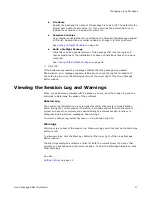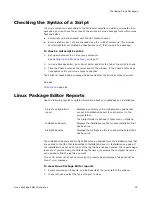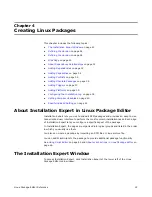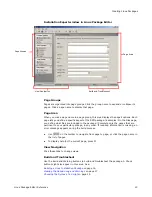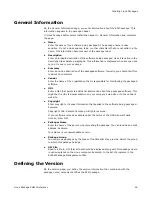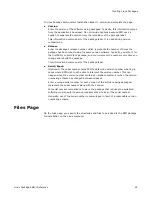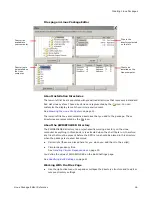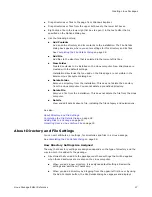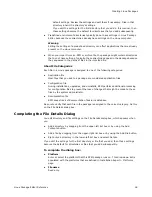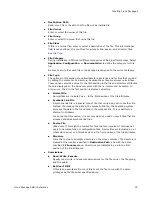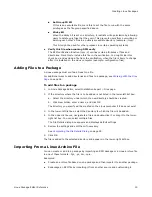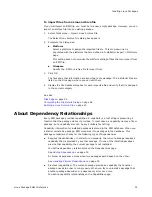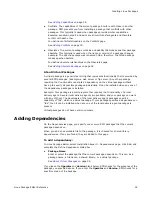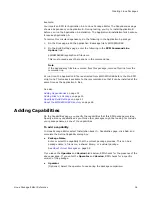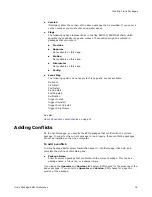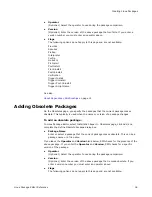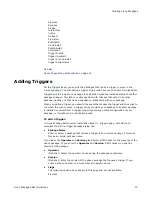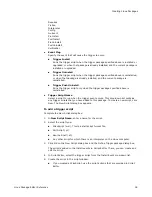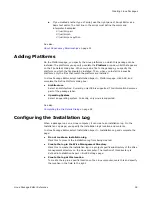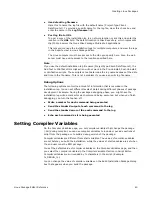
Linux Package Editor Reference
25
Creating Linux Packages
In Linux Package Editor, select Installation Expert > Version and complete the page:
z
Version
Enter the version of the software being packaged. Typically, this information comes
from the application’s developer. Do not include hyphens because RPM uses a
hyphen to separate the version from the remainder of the package label.
This information becomes part of the package label. It is used during version
comparisons.
z
Release
Enter the package’s release number, which represents the number of times the
package has been rebuilt using the same version software. Typically, you enter 1 for
the first PRM you build for a package, and you increment the number every time you
change and rebuild the package.
This information becomes part of the package label.
z
Serial/Epoch
(Optional.) The serial number helps RPM to determine version number ordering in
cases where RPM might not be able to interpret the version number. This can
happen when the version number contains an alpha character, or when the version
numbering scheme has changed between releases.
Enter a unique serial number for each version of the software being packaged.
Increment the serial number along with the version.
For serial number comparisons to work, the package that requires the serialized
software must specify its version requirements in terms of the serial number.
Generally, use of the serial number is discouraged in favor of a reasonable version
numbering scheme.
Files Page
On the Files page, you specify the directories and files to be added to the RPM package
for installation on the Linux computer.







